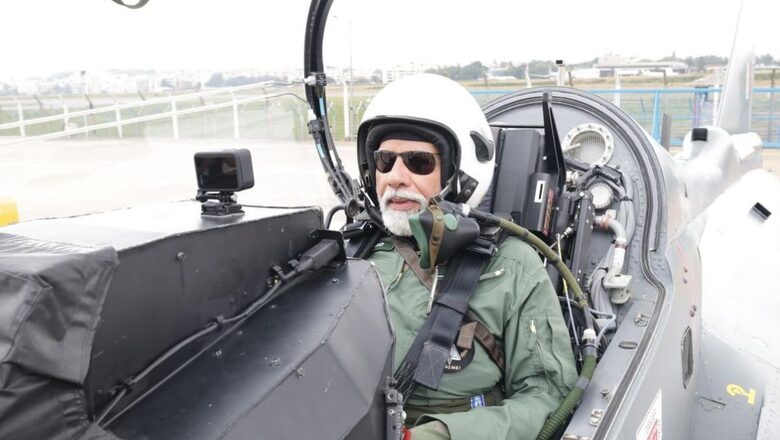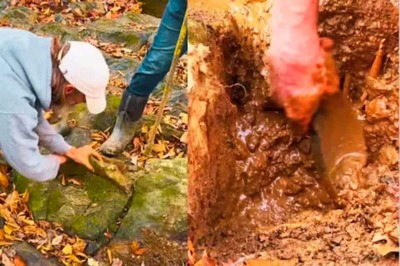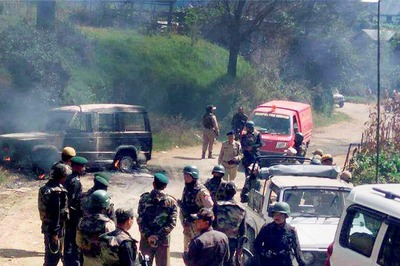
views
All eyes were on Narendra Modi this Saturday when he took a sortie on the light combat aircraft Tejas Mark 1, becoming the first Prime Minister to do so. While naysayers have tried to term it a “chunavi photo op”, they are missing the point. In fact, is it’s a big vote of confidence in the first indigenously produced fighter jet and in India’s defence indigenisation process.
PM Modi had tweeted: “Flying in Tejas today, I can say with immense pride that due to our hard work and dedication, we are no less than anyone in the world in the field of self-reliance. Heartiest congratulations to the Indian Air Force, DRDO and HAL as well as all Indians.”
The PM’s sortie comes even as India is readying 4 mega deals worth 1.4 lakh crores to boost India’s defence capabilities. The Modi government has already placed an order for 83 Tejas aircraft worth Rs 36,468 crore. Their delivery is scheduled to begin by February 2024.
Three other indigenous defence manufacturing projects are also in the pipeline. This includes the production of another aircraft carrier and 156 Prachand attack helicopters. This would be a formidable endorsement of India’s defence manufacturing sector. And HAL and DRDO are the big winners.
From Underdog to IAF’s Star Fighter
Kangana Ranaut’s Tejas may not have been a success at the box office, but the real Tejas has been one of India’s biggest hits. The aircraft has gone from a long and challenging start to being accepted and celebrated by the Indian Air Force, and now being endorsed with a sortie by Prime Minister Modi himself.
Initiated in the 1980s, the Tejas programme aimed to replace the ageing MiG-21 fleet in the Indian Air Force. Although attaining a maiden flight in 2001, it wasn’t until 2015 that the IAF was handed over the first fully certified aircraft.
The project had encountered various obstacles including engine issues and budget limitations. Design had undergone significant changes as operational requirements changed. Striking the right balance between weight, agility, and technological sophistication had been a considerable challenge which HAL has overcome. Another issue was the development of a reliable and powerful indigenous engine. The Kaveri engine faced several issues, leading to delays. The decision to switch to a foreign engine, the GE F404, has helped accelerate production.
A recent deal has been signed between HAL and General Electric for the production of F414 engines in India, which includes an 80% transfer of technology. While these will initially be for Boeing F/A-18E/F Super Hornet and Saab’s Gripen E/F aircraft, these engines will also power the under development Tejas Mark 2 aircraft.
After decades of research and development on the project, the Final Operational Clearance (FOC) was granted in 2019, signifying that the Tejas had met the stringent criteria set by the IAF for full-fledged operational deployment, including the integration of advanced weapons and avionics.
Scepticism had once surrounded India’s ambition to produce an indigenous fighter jet. Critics doubted the nation’s capability. But in the past decade, with ample support from the government, HAL has been able to prove the naysayers wrong. Tejas development has accelerated in the past decade.
In fact, the IAF got its very first two-seater variant of Tejas Mark 1 this October. Tejas’ naval variant had also made its maiden landing on INS Vikrant earlier this year. The IAF has deployed Tejas in various roles, including air defence and ground attack.
Make in India’s Defence Front-Runner
The defence manufacturing industry in India is going through a renaissance. Once predominantly a defence importer, India has now transitioned into a notable exporter of a diverse array of major platforms.
BrahMos missiles are the front-runner in exports. But recent developments show that Tejas is not far behind.
India’s defence exports have soared from Rs 686 crore in FY 2013-14 to nearly Rs 16,000 crore in FY 2022-23, marking a remarkable 23-fold increase. With exports spanning over 85 countries, India’s defence industry showcases its design and development capabilities globally, with 100 firms actively involved in exporting defence products.
More than a dozen friendly nations in West Asia, Africa and Southeast Asia have shown interest in buying Indian defence equipment. In fact, India has found pivotal success in its Indo-Pacific neighbourhood. ASEAN and Latin America are markets where India expects significant breakthroughs.
The Philippines has already signed up for BrahMos in a deal worth $375 million. Vietnam and Indonesia are next in line with major orders expected to be just around the corner.
HAL has engaged in discussions with numerous nations regarding the potential export of Tejas. Indonesia, Malaysia, Sri Lanka, Argentina, and Vietnam are among the nations which have shown interest in the jet. Botswana is also considering Tejas as a replacement for its Canadair CF-5s. Egypt had previously shown interest in acquiring 70 Tejas craft to substitute their existing Chinese-made Hongdu JL-8 trainers but is now reportedly seeking only around 20 aircraft, as revealed during Aero India 2023.
In such a scenario, PM Modi’s Tejas sortie is a grand vote of confidence, fully endorsing the Tejas aircraft for the world. It’s a message that as India’s geopolitical and diplomatic might outpaces many nations, its defence manufacturing capabilities are also catching up with the times.




















Comments
0 comment